Shooting in the snow can be a lot of fun, but not without its challenges. For starters, it’s BRIGHT and if you’re shooting in auto, you’re camera will tend to underexpose everything in the picture (including your subjects) to compensate for the brightness of the snow. The other problem faced is that the camera will tend to give snow a blueish tint to your photos. Today I wanted to share a few things I’ve found useful when shooting in the snow- with examples from a recent engagement session – to eliminate some of those pesky problems.
Location Scouting: I try to scout locations before every sessions, but I find it’s even more important to have a firm game plan when shooting in the snow. The day before this engagement session I had one mission only: search for shade. But not just any old shade. I needed open shade, a lightly shaded area with light peeking through. This tree-lined passage way fit the criteria perfectly. Not only did it provide enough shade from the mix of bright snow and sun, it allowed enough light through to properly expose my subjects.
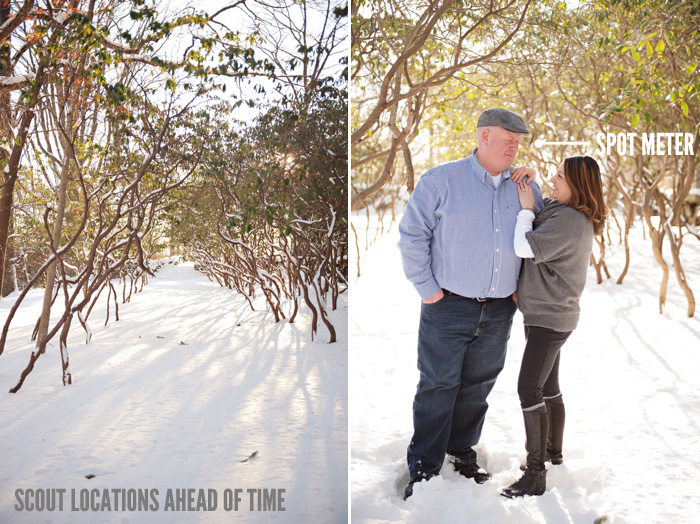
Spot Metering: I’ve discussed the importance of spot metering for backlighting photos, as well as shooting silhouettes. For the same reasons, we’re going to rely on spot metering in this scenario. The snow is going to make our cameras go haywire and if it’s on matrix/ multi-zone metering or auto, it will underexpose everything in the picture to make up for the brightness of the snow. So we need to set our camera to focus on the spot we’re most interested in exposing correctly: our subjects.
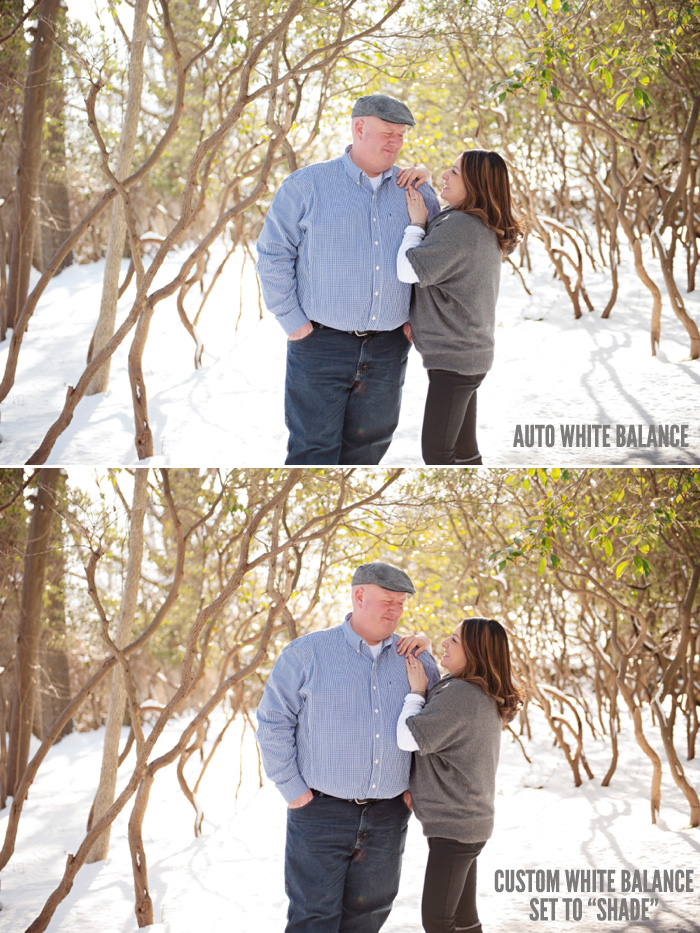
Custom White Balance: Unlike spot metering, this is a fairly new practice for me. Until very recently, I was shooting in auto white balance and correcting it in post production. But in the efforts of spending less time in front of a computer, I started adjusting my white balance in camera. Since I was shooting in open shade, I changed the WB setting to “shade” on my camera and what a difference it made! The shade setting gave it the warmth that was missing in auto (eliminating the blueish tint) and saved me a lots of time in post production.
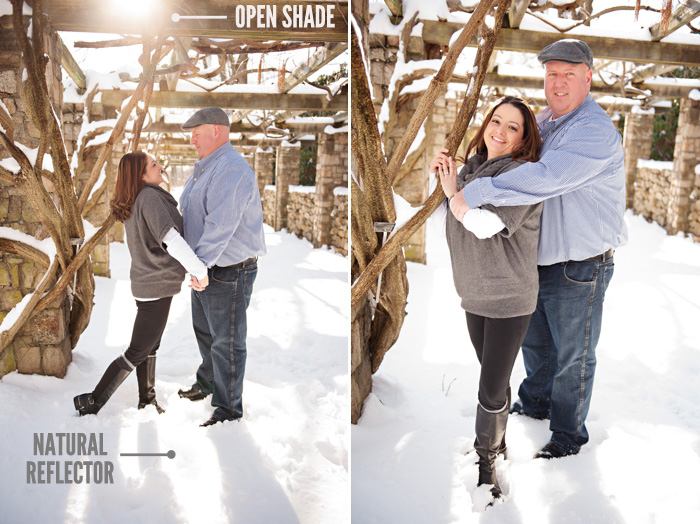
Natural Reflector: Bright snow can actually work to our advantage as a natural reflector, but this is where learning to position your subjects is key. Had I place this couple where the arrow points in direct path of the sunlight, they would have been overexposed with some serious blown out highlights across their faces. But I specifically placed them in the shade of the beam and now the bright patch of snow in front of them is acting as a reflector and bouncing some beautiful light back on their faces.

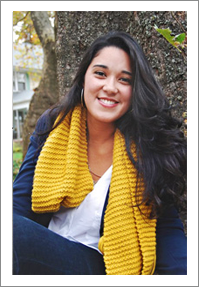
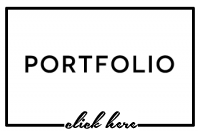

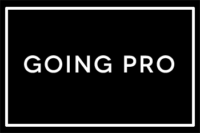



Amy - Such a good tutorial given, you know, we’re currently surrounded by snow! :)
Erica Freitas - Thank you soo much for these awesome tips!! I can’t wait to utilize them! Gorgeous pictures by the way.